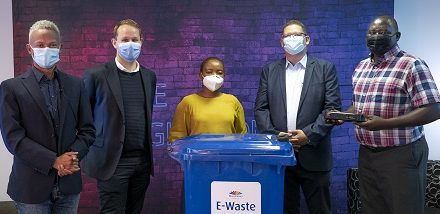
Phosphate dredging will have minor impact on hake fishing
The Namibia Marine Phosphate after last month’s media statement that they are awaiting the go ahead to commence with the Sandpiper phosphate mining from the Ministry of Mines and Energy, has shared that their Environmental Impact Assessment (EIA) study shows that the company’s dredging activities will have low to medium impacts on Namibia’s marine life and commercial fishing activities.
A key component of the licensing condition attached to the rights granted to Namibian Marine Phosphate (NMP) to develop the Sandpiper project off the coast of Walvis Bay was that the company should conduct an Environmental Impact Assessment (EIA) study, to assess the likely impact that the company’s dredging activities on marine life including commercial fishing activities. The company is also obliged to spell out how it will mitigate for those instances, where there might be an adverse impact on marine life arising from its dredging activities.
The study was conducted by M. J. Smith (CapFish) D.W. Japp (CapFish) Dr T. Robinson (Stellenbosch University), two independent marine and wildlife specialists. In their assessment the fisheries specialist concluded that, “The impact on Namibian fisheries will vary depending on the fishing sector. The operations of all fisheries will in some way, and at different levels of intensity, be impacted.”
Overall however the significance is considered to be negative and medium to low primarily because the area to be mined (annually up to 3 km2 and for the 20 year mining lifespan up to 60 km2) is a small fraction of the overall Namibian fishing grounds. This fraction may however increase significantly if mining of this nature is to be expanded or alternative mine sites introduced the experts warned.
The EIA study further states in the fishery specialist report that within the Mining Lease Area (MLA) the historical catch (of hake) is 0.86% or about 1% of total hake trawl effort. There are minimal records of fishing in (target mine areas) SP-1 and SP-3 but fishing has been reported in SP-2. In effect this means that the historical data show that in the actual area to be mined initially (SP-1) very little trawling has ever taken place.
The NMP project general manager, David Wellbeloved said, “there will still be a fishing industry long after NMP has finished dredging, there is no intention on our part to destroy the industry. Besides it would not make sense for us to destroy the industry. Our studies indicate that the negative impact on percentage terms will be between 0 and 0,5%, without any mitigation measures in place. Once there are processes in place that figure will come down substantially, we are looking at a figure of 0,1% over a 20 year period”.
Furthermore, the EIA report stated that the target mine area is also close to the 200m contour, an area which the Namibian Ministry of Fisheries has closed to fishing. The specialist report states that if the area immediately outside of the areas proposed to mine are considered the following is likely, “ Trawling for hake, although it occurs significantly beyond the MLA, is highly unlikely to be affected”.
The fisheries specialist also noted that Hake are found throughout the mining lease area and that they assume the abundance of hake in the MLA and surrounding areas is fairly uniform with higher levels of hake abundance in deeper water. Mining at the specific sites is therefore expected to impact on hake (in the broader MLA area) but due to their mobility hake will most likely avoid the mined area.
“With respect to juvenile hake, or hake expected to recruit to the hake fishery in deeper waters than where phosphate mining is proposed, the study articulates that the distribution of juvenile hake (< 21 cm) occurs throughout and mostly shallower than the 200 m bathycontour. This is a typical distribution pattern for juvenile hake that recruit in shallow water and then migrate deeper as they age.
Specifically juvenile hake are found in the MLA in the northern part near SP-1. Juvenile hake are expected to be displaced from the dredging area, but their mobility should limit the likelihood of mortality,” they added.
Meanwhile, the specialists, expect that based on recent historical catch and effort data in the MLA, 5.03% of hake trawl catch, will be indirectly affected, “However this does not imply that this proportion of catch will be lost but that the fishery in this area will in some way have to adjust normal fishing operations,” the specialist explained.













































